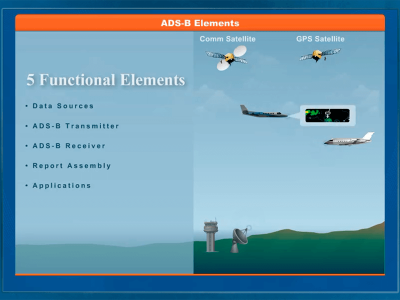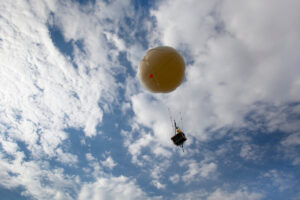ADS-B radar is helpful while flying in aviation weather, but note time adjustments
Improvements in aviation weather radar technology have had a tremendous impact on pilot situational awareness. Flying in weather is now safer than ever before. In fact, weather related accidents have been in a steady decline for years now. Whether you are flying a single engine piston at low altitudes or a high-performance jet at FL450, data link weather is one of the biggest revolutions for pilots since GPS…. but only if you understand what the technology is telling you.
In Part 3 of our radar series, we are going to talk about datalink radar, specifically the advantages and limitations of ADS-B radar. But pilots must have a clear understanding of the limitations of ALL datalink weather products before using them to make strategic in-flight decisions. Processing delays can wreak havoc on the best laid plans for thunderstorm avoidance, so a thorough knowledge of your chosen radar system is critical to the safety of your flight.
Let me say that last part again. All datalink weather operates with a delay of some kind. It may be only 5 to 10 minutes, but that is definitely enough time for a sucker hole to close up. Do not weave in and out of cells using data link radar! – it is for big picture awareness only!
Now for some less critical distinctions…. ADS-B actually has 2 weather products: Regional (used within 250 NM of the station) and National, which serves the Continental United States (CONUS). The Regional weather is transmitted every 2 ½ minutes, but only updated once every 5 minutes. The National CONUS product is updated every 15 minutes and actually has a lower resolution than the regional display. It will automatically shift to the higher resolution and more frequent updates when your aircraft moves to within 250 NM of the station.
ADS-B radar uses a network of ground stations for it’s information. This is similar to the VOR network, meaning that your reception will improve as your altitude increases. Reception also depends on how close you are to the nearest ground station. If you are at a location in a remote area of the West, you may get spotty coverage until you are at a relatively high altitude. On the other hand, east of the Mississippi, you will more than likely have radar coverage at pattern altitude.
This also means that when you are on the ground waiting to depart, you will not be picking up any ADS-B weather. Depending on your location, you may be able to get it shortly after you are airborne, but I really like taking that last look before takeoff as I’m pointing in the direction that I’ll be going.
ADS-B is also limited to coverage within the United States. You may get lucky if you’re flying close to the border in southern Canada, but that’s about it.
Getting back to the delay factor with ADS-B: There are 2 factors regarding the update rate of a weather product. First is how often the weather data is transmitted to your aircraft and second is how often the weather product itself is updated. Both contribute to the delay between the actual weather outside your airplane and the weather you are seeing on your radar. Don’t trust it for split second decisions!
One very important positive factor with ADS-B radar is the cost. As in, there isn’t any. Your tax dollars have completely funded the ADS-B radar network, quite a bonus when you realize the other guys charge as much as $100 per month for a subscription (more about that in Part IV of our series). Before I go, I want to make sure that it is clear that we are strictly talking about ADS-B “in” throughout this discussion. This is the data link portion that you receive in your airplane. The mandatory “Out” upgrade relates to transponder operation, not the weather radar.
In Part 4 of our Aviation Weather series, we will talk about the advantages and disadvantages of Sirius XM aviation weather radar, along with minor differences.
RELATED READING
RELATED CTS TRAINING










